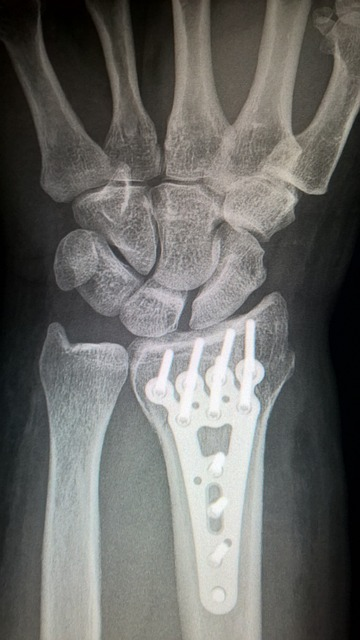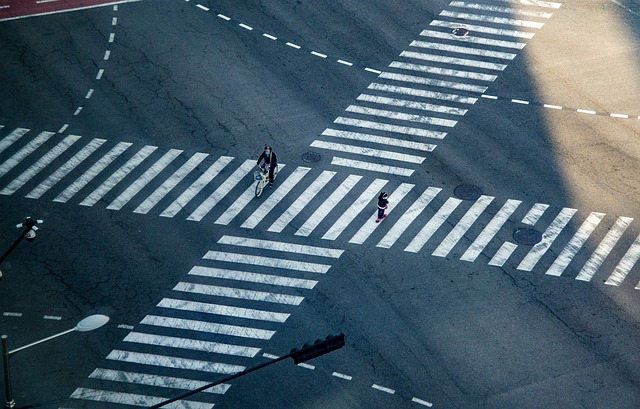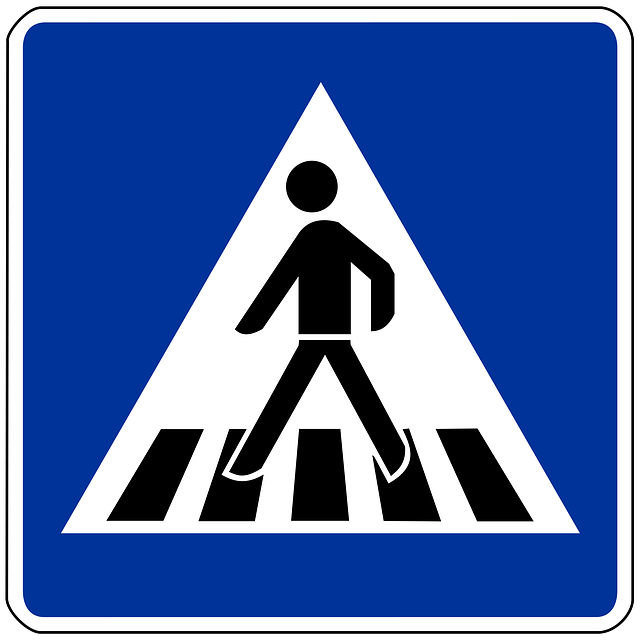Pedestrian accidents and serious pedestrian injuries and fatalities are some of the most devastating incidents that can occur on the road. They often involve a collision between a pedestrian and the driver of a motor vehicle, and the injuries sustained by negligent drivers and the injured or killed pedestrian can be severe or even fatal. In this article, we will explore some of the most common injuries sustained in pedestrian accidents and discuss their causes, symptoms, and treatment options.

Head Injuries
Head and back injuries, traumatic brain injuries, are among the most serious injuries that can result from being hit by a car in pedestrian accident. When a pedestrian is struck by a vehicle, their head can be thrown back and be hit by a car or the pavement, resulting in traumatic brain injury (TBI). TBIs can range in severity from mild concussions to severe brain damage and death, and the symptoms can be varied and long-lasting.
Symptoms of serious injuries and a mild TBI can include headaches, dizziness, and confusion, while severe internal injuries and TBIs can cause seizures, coma, and even death. Treatment for severe injuries and TBIs can include medication, surgery, and rehabilitation, depending on medical treatment and the severity of the injury.
Spinal Cord Injuries
Pedestrian and those injured in car accidents can have neck injuries and also result in spinal cord injuries (SCI), injuries which can cause permanent damage to the nerves in the spinal cord. SCIs can cause paralysis or loss of feeling in the arms, legs, and torso, and can also affect the injured person's ability to breathe.
Symptoms of an SCI can vary depending on the location and severity of the injury. Some common symptoms include loss of sensation, loss of movement, and difficulty breathing. Treatment for an SCI can include surgery, physical therapy, and medication, but unfortunately, many people with an SCI never fully recover.
Broken Bones
Broken bone fractures and broken bones are another common injury in traffic crashes and pedestrian accidents. When a pedestrian is hit by a vehicle, their body can be thrown in any number of directions, causing bones in lower and upper extremities, to fracture or break. Common, broken bones, that can be affected in a pedestrian accident include the arms, legs, ribs, and spine.
Symptoms of a broken bone can include pain, swelling, and difficulty moving the affected limb. Treatment for a broken bone can range from immobilization with a cast or brace to surgery, depending on the severity of the injury.

Soft Tissue Injuries
Soft tissue injuries are another common injury in which pedestrian accidents occur. Soft tissues include muscles, tendons, and ligaments, and can be damaged when a pedestrian's lower leg or body is thrown or twisted during an accident. Common soft tissue injuries in pedestrian collisions include sprains, strains compound fractures, and contusions.
Symptoms of a soft tissue injury can include pain, swelling, and limited mobility in the affected area. Treatment for a soft tissue injury can include rest, ice, compression, and elevation (RICE), physical therapy, and medication.
Road Rash
Road rash is a type of abrasion that occurs when a pedestrian's body or skin is scraped against the roadway or pavement during an accident. Road rash can be minor injuries that range in severity from mild scrapes to deep cuts that require stitches.
Symptoms of road rash can include pain, swelling, and bleeding from the affected area. Treatment for road rash can include cleaning the wound, applying antibiotic ointment, and covering the wound with a sterile bandage.
Post-Traumatic Stress Disorder
Pedestrian accidents and other vehicle and pedestrian collisions can have traumatic injuries and also cause emotional trauma, such as post-traumatic stress disorder (PTSD). PTSD can develop after a serious accident or traumatic event and can cause symptoms such as anxiety, depression, and flashbacks traumatic brain injury.
Symptoms of PTSD can be long-lasting and can affect a sometimes life threatening a person's ability to work or carry out daily activities. Treatment for PTSD can include therapy and medication, but many people with PTSD never fully recover.

Causes of Pedestrian Accidents
Pedestrian accidents where pedestrians can have been hit by a car or driver of a car variety of causes contributing factors, but some of the most common include:
- Distracted driving: Drivers who are distracted by their surroundings or their mobile devices may fail to notice pedestrians crossing the road or walking on the sidewalk.
- Speeding: Drivers who are traveling above the speed limit may not have enough time to react to a pedestrian who suddenly appears in their path.
- Intoxication: Drivers who are under the influence of drugs or alcohol may have impaired judgment, making it difficult to avoid hitting a pedestrian.
- Failure to yield: Drivers who fail to yield to pedestrians in crosswalks or at intersections can cause serious accidents.
- Poor visibility: Pedestrians who are wearing dark clothing or walking in poorly-lit areas may be difficult for drivers to see, especially at night
Preventing Pedestrian Accidents
There are steps that pedestrians can take to reduce their risk of being involved in an accident. Some of these include:
- Wearing bright or reflective clothing: This can make it easier for drivers to see pedestrians, especially at night.
- Being aware of surroundings: Pedestrians should be aware of their surroundings at all times, and should avoid using their mobile devices or headphones while walking.
- Walking on sidewalks: Pedestrians should always walk on sidewalks when possible, and should only walk on the road if there is no sidewalk available.
- Making eye contact with drivers: Pedestrians should make eye contact with drivers before crossing the road to ensure that they have been seen.

Do crosswalks prevent pedestrian accident injuries?
Crosswalks are designed to provide pedestrians with a safe and designated area to cross the road. They are marked with white lines and, in some cases, may also include signs, signals, or other markings to indicate to drivers that pedestrians have the right of way oncoming traffic.
While crosswalks can be an effective tool for improving pedestrian and driver safety, they do not guarantee that pedestrian accidents will be prevented. Drivers may still fail to yield to pedestrians in crosswalks or may not be paying attention to their surroundings, which can result in accidents.
In addition, the effectiveness slow speed of crosswalks can be affected by a variety of factors, including:
- Visibility: Crosswalks that are poorly marked or located in poorly-lit areas may be difficult for drivers to see, especially at night or in adverse weather conditions.
- Speed: Drivers who are traveling at a high speed may not have enough time to react to a pedestrian in a crosswalk, even if they see them.
- Driver behavior: Some drivers may intentionally disregard crosswalks or may be distracted, impaired, or aggressive, which can increase the risk of accidents.
Despite these limitations, crosswalks are still an important tool for improving pedestrian safety. When used in conjunction with other safety measures, such as education, enforcement, and engineering improvements, they can help to reduce the number of pedestrian accidents and injuries.
Drivers can also take steps to reduce their risk of causing a pedestrian accident. Some of these include:
- Avoiding distractions: Distracted driving refers to any activity that diverts a driver's attention away from the road and driving task. This can include a wide range of activities, from texting or using a mobile phone to eating, drinking, or talking to passengers.
Distracted driving is a dangerous behavior that can increase the risk of accidents and injuries. When a driver is distracted, they may fail to notice pedestrians, other vehicles, or obstacles in their path, and may not have enough time to react and avoid a collision.
- Obeying traffic laws: Drivers should obey traffic laws and signals, and should always yield to pedestrians in crosswalks or at intersections.
- Driving at a safe speed: Driving at a safe speed means operating a vehicle at a speed that is appropriate for the road and weather conditions, as well as the driver's level of experience and the capabilities of the vehicle.
The speed limit is the maximum speed at which drivers are legally allowed to drive on a particular road. However, driving at the speed limit is not always safe, especially in adverse weather conditions or in areas with heavy pedestrian or bicycle traffic.
- Being aware of surroundings: Drivers should be aware of their surroundings at all times, and should be on the lookout for pedestrians, especially in residential areas or areas with heavy foot traffic.

Recovery and Rehabilitation
The recovery medical treatment, and rehabilitation process for a pedestrian accident injury or death can be a long and difficult road. Depending on the severity of the head injury or death itself, the person may require hospitalization, surgery, and long-term rehabilitation.
Rehabilitation for a pedestrian accident injury may include physical therapy, occupational therapy, and speech therapy, with many factors, depending on the type of pedestrian accident injuries and injury sustained. The goal of rehabilitation for all pedestrian accident injuries and injuries is to help the person regain strength, mobility, and independence, and to help them adjust to any long-term limitations caused by their injury.
Compensation for Pedestrian Accident Injuries
If a pedestrian is injured or killed in an accident caused by a driver other than motor vehicle or's negligence, they may be entitled to compensation for their injuries. This compensation may include medical expenses, lost wages, pain and suffering, and other damages.
In order to receive financial compensation, the injured pedestrian will need to file a personal injury claim against the other vehicle or driver responsible for the accident. It is important to work with an experienced personal injury attorney who can help you navigate the legal, insurance coverage and financial recovery process and your legal right to ensure that you receive the financial compensation that you deserve.
If you have been injured in being hit by a car or pedestrian accident, it is strongly recommended that you consult with a personal injury lawyer to discuss your legal options. A lawyer can help you navigate the complex legal process, ensure that your rights are protected, and help you obtain the compensation you deserve.
Pedestrian accident cases for pedestrian injuries can be complicated and often involve dealing with insurance companies, medical bills, and other legal issues. A personal injury lawyer can help you understand your legal rights and options, negotiate with insurance companies on your behalf, and represent you in court if necessary.
An experienced personal injury lawyer can also help you gather evidence of common injuries, such as police reports, witness statements, and medical records, to build a strong case for compensation. They can also help you calculate the full extent of your damages, including medical expenses, lost wages, and pain and suffering.
In addition to free consultation, many personal injury lawyers work on a contingency basis, which means that they only get paid if you win your case. This can provide you with peace of mind knowing that you will not have to pay legal fees out of pocket.
Preventing Pedestrian Accidents in the Future
In addition to taking steps to prevent both pedestrian injuries and motor vehicle accidents as an individual pedestrian or driver, there are also steps that communities and governments can take to reduce the various risk factors of both pedestrian fatalities and car accidents together. Some common examples of these include:
- Installing crosswalks and pedestrian signals in areas with heavy foot traffic.
- Designing roads and sidewalks to be pedestrian-friendly, with well-lit sidewalks, curb cuts, and other safety features.
- Enforcing traffic laws and cracking down on distracted driving and speeding.
- Educating the public about pedestrian safety and encouraging safe behavior among both pedestrians and drivers.
By working together to prevent pedestrian deaths and injuries and car accidents in urban areas, we can help to reduce the number of pedestrian and car accidents occur and of injuries and fatalities caused by these devastating incidents.
Conclusion
Pedestrian accidents can cause serious injuries and have long-term consequences for the people involved in pedestrian accident. By taking steps to prevent pedestrian accidents and advocating for pedestrian safety, we can help to reduce the number of serious pedestrian injuries and deaths when accidents occur and injuries that occur on our roads. If you or a loved one has been injured in a pedestrian accident, it is important to seek the advice of an experienced personal injury attorney who can help you understand your legal rights and options and work to ensure that you receive the compensation you deserve.

